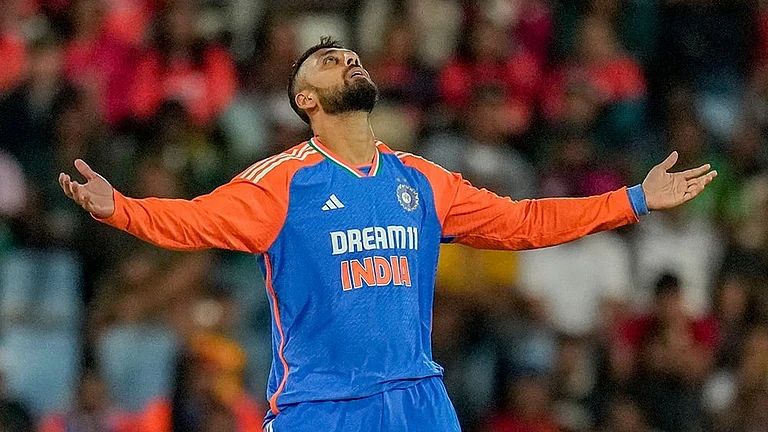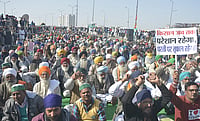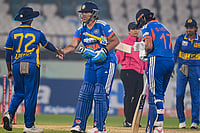Around a decade after a Western cartoon mocked the Indian space programme by depicting a cattle farmer knocking on the doors of the ‘Elite Space Club’, India on Wednesday had the last laugh as Chandrayaan-3 landed on Moon.
India has become only the fourth country in the world after the United States, the former Soviet Union, and China to land on Moon and the first country ever to land on Moon’s South Pole.
As over a billion pepole waited with baited breaths through the ‘15 minutes of terror’, the Indian Space Research Organisation (ISRO) announced shortly after 6 pm that the lander module of Chandrayaan-3, named Vikram, has touched down on Moon. The landing comes days after a similar mission by Russia in the same South Pole region failed.
For the next two weeks, the Vikram lander and Pragyaan rover would conduct a host of scientific experiments. The duo are the first set of eyes and ears of humanity on the Lunar South Pole where they continue the storied legacy of the Chandrayaan programme. In 2009, Chandrayaan-1 with a US instrument aboard had confirmed the presence of ice on Lunar South Pole.
The succesful landing of Chandrayaan-3 is India’s Appollo-11 moment. After playing catch-up for decades, India has finally entered the league of big players in spacefaring.
Since the dawn of civilisation, humans have looked up at Moon and the stars. Now, India has reached the Moon. The Moon is no longer just a stuff of tales and fascination, but within reach — within India’s reach.
“Every child has grown up looking up at the Moon. Today, they have seen Chandrayaan-3 landing on the Moon and they realised Moon is within reach and sky is not the limit. This is going to be such a boost to the national consciousness and is likely to drive many children to space sciences,” says space educator Srimathy Kesan.
The coming of age of Indian space programme
After marvelling at the US missions for decades and looking at the US-Soviet Union Space Race with fascination that put humans on the Moon and sailed the solar system, India now has its own sets of icons to look up to.
Space policy researcher Pranav K Satyanath says, “For the public, having a successful landing means they have their own sets of icons. No one wants to look up to White men for inspiration. Children will be excited and new doors to space will open to them. The success of Chandrayaan marks the beginning of a new movement of India.”
Prof. Aloke Kumar of Indian Institute of Science (IISc) says he cannot recall a scientific milestone as big as this and terms the successful landing on Moon as “a moment of transition”.
“After playing catch up for decades, now India is among the big players of spacefaring. For decades, India was into building and launching satellites and using space strictly for the public good on Earth, but now India is a truly spacefaring nation. This is absolutely an Appollo-11 moment for India,” says Kumar, Associate Professor, Department of Mechanical Engineering, IISc Bengaluru, whose lab is developing biological payloads for the upcoming Gaganyaan programme.
Compared to previous missions, the Chandrayaan programme is scientifically very sound. The Mars Orbiter Mission (MOM), dubbed as Mangalyaan, was criticised for being low on scientific value, but that’s not the case.
Satyanath tells Outlook, “The criticism for the Mars mission was somewhat valid but that’s not the case for Chandrayaan-3. The Chandrayaan-3 has several instruments that would conduct serious scientific activities on Moon. The 14-day period might seem little but that’s a lot of time to gather crucial insights, particularly when it’s the first even spacecraft to land on the unexplored South Pole of Moon.”
Astrophysicist Somak Raychaudhury terms the landing of Chandrayaan-3 on Moon as the “crowning achievement” for all Indians and said it would pave way for much more ambitious missions.
“What sets it apart is that we have become the first nation to land on the Far Side of the Moon, demonstrating our prowess in space engineering, ability to innovate and scientific rigour. Chandrayaan-3 is the culmination of decades of relentless pursuit of excellence by our scientists, and at the same time it is a stepping stone for our country’s ambitious space exploration programmes,” says Raychaudhury, Vice Chancellor of Ashoka University.
Raychaudhury, who earlier served as the Director of Inter-University Centre for Astronomy and Astrophysics (IUCAA, Pune), says “we are preparing for the hitherto unexplored frontieres of space” with the upcoming missions.
“The mission will unravel the mysteries of the moon, giving insights into our own planet’s history, help us prepare for our first human landing, and pave the way for future habitation. With the New Space Policy, upcoming missions such as Aditya-L1, Gaganyaan and future missions to Mars and beyond, we are preparing for the hitherto unexplored frontiers of space,” says Raychaudhury in a statement to Outlook.
The road ahead for Indian space oddyssey
The landing of Chandrayaan-3 on Moon opens a host of opportunities for India. From more international collaborations to a boost to national space ambitions, the possibilities are endless. But caution is needed to continue the momentum.
Even though it’s the biggest moment of the Indian space programme, several opportunities were lost as the Indian Space Research Organisation (ISRO) could not deploy as much public outreach as it should have to completely impress the significance of the situation, says Kesan, Founder and Chief Executive of Space Kidz India, a start-up working on space education that connects school students with ISRO and industry experts.
She says, “There was no mission patch, mascot, or a publicised anthem. These things go a long way in mainstreaming and popularising the space missions. The outreach could have been much better that would have brought the Chandrayaan mission much closer to the people. Going ahead, we ought to have a research park for students along the lines of Kennedy Centre in the United States where children and students can go and see the spacecraft, see and experience simulators, and get firsthand idea of spacefaring.”
Kesan says that people who would take us to Mars are in schools and colleges today and space sciences need to be more approachable to them.
Missed opportunities aside, the next chapter of the Indian space programme is exciting. It includes a greater participation of private sector and increased potential for international collaborations. After becoming the first to land on Lunar South Pole, India is set to explore the Moon’s Polar Regions for water in a joint mission with Japan in next two years. The missions to study the Sun and a joint satellite with the United States is also in the works.
Space policy researcher Pranav R Satyanath says the next 10 years are going to bring more private players to the Indian space scene and would set the stage for greater private sector’s integration with ISRO.
“The ISRO has shown willingness to transfer its technology to the private sector. There are of course conditions to such transfers. The Indian Space Policy-2023 also makes way for private players to develop launch vehicles for small satellites. This way, the commercial launches that ISRO’s commercial arm does would no longer be its exclusive domain as private sector would also compete — at least for small satellites,” says Satyanath, Research Associate, Council for Strategic and Defense Research (CSDR).
The Chandrayaan-3, therefore, concludes a 15-year pursuit of Moon that began with Chandrayaan-1. In the conclusion of the Chandrayaan programme is a beginning for the new space age of India.


























